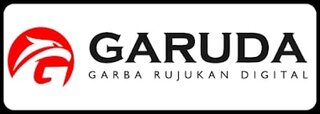Author Guidelines
Standard Operating Procedure for Author
STANDARD OPERATING PROCEDURE (SOP)
FOR SCIENTIFIC ARTICLE AUTHORS
- Jurnal Riset Akuntansi Kontemporer Publishing Edition
Jurnal Riset Akuntansi Kontemporer published twice a year, that is every April and October with ISSN numbers (print) 2088-5091 and (online) 2597-6826.
- Article type
- Articles are written based on the results of empirical research in the form of quantitative and qualitative research (among others using scientific research methods including surveys, case studies, experiments/experiments, and other types of research) with the topic of accounting economics studies.
- Articles in the form of theoretical studies are only intended for invited authors, who are specially invited to fill out articles in Jurnal Riset Akuntansi Kontemporer
- Writing Format
Articles are written in English, with the writing format:
- Using Microsoft Word
- A4 paper size
- Times New Roman font size 11 pt, 1 spacing (before 0 pt and after 0 pt)
- Manuscripts are written 5-20 pages, margins of 3 cm (top, bottom, left-right).
- Writing system
Writing scientific articles to be sent must follow the systematics or writing as listed in Table below.
- Title: Must be specific and effective; The title in English consists of 10-15 words; The title of the article is written in capital letters at the beginning of each word, font size 14 pt, 1.5 spacing, bold, placed in the middle.
- Name/Author: Completely written without a degree; Equipped with the author's institutional address complete with postal code, and the author's email address; If there is more than one author, it must be clear the 1st and 2nd authors listed in the manuscript.
- Abstract: Made in English which contains a brief and concise summary of the essence of the results of the study covering the background, objectives, methods, findings, and implications; Consists of 100-150 words.
- Keywords: Must reflect the concept or research variable, consisting of 5-6 words.
- Introduction: Explain the main things discussed, namely the background of the research, research problems, state-of-the-art, a summary and relevant theoretical studies, research objective
- Method: Includes research design, population and sample, development of research instruments, data collection techniques, and data analysis techniques, which are described briefly.
- Results: Presenting the final results of data analysis, not raw data that has not been processed; The results of calculations and statistical/other tests can be displayed in this section, namely the calculation results that are important to know.
- Discussion: This is a separate part (not united with the results); The discussion is an explicit confirmation of the interpretation of the results of data analysis; Explaining the answers to research objectives/problem identification, linking the findings to previous theories or research (sourced from national and international scientific journals), as well as the implications of the findings related to the current situation.
- Conclusion: A summary description of the discussion of research results, but still referring to the objectives and research hypotheses, not a summary of the results of calculations or statistical tests; Can present findings or the creation of new theories obtained from research results.
- References: The bibliography contains only the entirety of the reference sources referenced in the text; The bibliography or reference list consists of 80% primary references (national and international scientific journals) and 20% secondary references (relevant text books); The degree of up-to-date literature referred to is the last 10 years, relevant classics can be referred to as a source of problems but not for comparison of discussions; Writing a bibliography follows generally accepted references; Bibliography must be sorted alphabetically according to the author's last name (without an academic degree) or the name of the institution with reference to the Harvard System.
- Attachment: The attached section is part of the article that is not in the body of the article, but must be known in particular by the reviewer, for example the attachment of the questionnaire and the results of the questionnaire.
- Statement letter: The author must include a written statement, if the article that is written in part or in whole has never been published in another journal/ proceeding/ magazine/ newspaper/ anthology/ book and or other types of printed works; The statement form can be downloaded on the website of Jurnal Riset Akuntansi Kontemporer
Plagiarism Free Statement Sheet and Double Publication
















